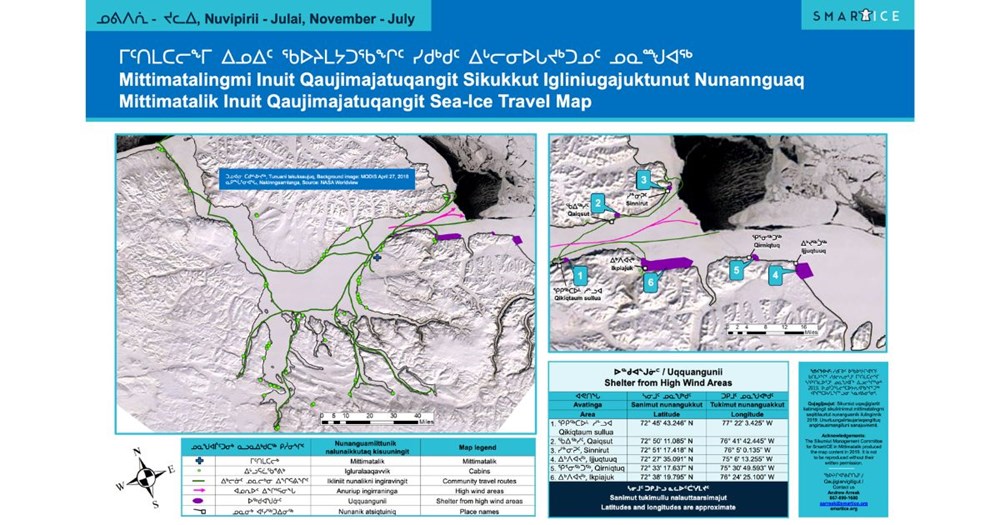This project is funded in part by the Government of Canada.
Climate change has caused unpredictable ice travel conditions in Inuit Nunangat. This has led to more accidents and search-and-rescue incidents during the ice season. The colonization of Inuit has also resulted in generations denied the experience of learning from their Elders how to safely travel on ice. It is Inuit Qaujimajatuqangit, learned from extensive experience on the ice and passed down through generations, that teaches youth how to plan, prepare, identify, and test the ice for safety while traveling. With climate change it has become even more essential to share this Inuit Qaujimajatuqangit to improve sea ice travel safety skills and emergency prevention for Inuit youth in their communities so they can adapt and maintain community ice travel.

“Inuit maintain the longest unrecorded history of sea ice science in Canada. Their knowledge is preserved by orally passing down this knowledge through generations and sharing their extensive and recent travel experiences on the sea ice. This knowledge is therefore not in a database, but exists in the collective minds of these expert sea ice travelers“ says Dr. Katherine Wilson, SmartICE Director of Knowledge Co-Production
This project was originally piloted in Mittimatalik (Pond Inlet) through a research partnership called the Sikumiut Model. In this model, Inuit community management committees govern the research, Inuit youth conduct the research, and non-Inuit SmartICE research partners provide project support and mentorship. Inuit youth are trained to facilitate knowledge sharing workshops, and in computer mapping and product development to share this Inuit Qaujimajatuqangit. Example products from each community may include: an illustrated ice terminology guide book to teach the language of ice, ice travel safety posters to educate youth on how to prepare for and travel safely on the ice, seasonal ice travel safety maps of dangerous ice conditions and safe shelter, and school-age computer games to teach sea ice travel terminology and knowledge.
“I meet with the community management committee, I talk with elders regarding ice conditions, we share sea ice terms and definitions to keep the Inuit knowledge alive and in the community to keep our language strong” says Andrew Arreak, SmartICE Regional Operations Lead for the Qikiqtaaluk North Region.
Youth are also learning how to interpret satellite imagery based on local Inuit Qaujimajatuqangit to monitor and map ice travel routes and dangerous areas in near-real time. Additionally, as part of their training, Inuit youth are reviewing archived satellite data to map the historical sea ice travel conditions and understand where and when the ice is becoming more dangerous in their communities.
“It allows me to design the maps from an Inuit perspective, to make sure that these maps make sense for my community” Olivia Qamanirq, Knowledge Co-Production Coordinator for SmartICE in Arctic Bay.
Quick Facts
- SmartICE is a community-based organization offering climate change adaptation tools, designed in partnership with Inuit communities to support sea ice travel safety.
- SmartICE, founded in 2016, has partnered with over 30 communities across Inuit Nunangat and northern territories.
- SmartICE is an internationally recognized work integration social enterprise that empowers Indigenous communities to adapt to unpredictable and unprecedented ice travel conditions.
- 67 Inuktitut ice terms were documented, described and illustrated for the first time in Mittimatalik.
- View 2 Inuktitut travel safety posters, 3 travel hazards maps and a terminology booklet for the community of Mittimatalik.
Read the original article here.
